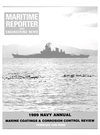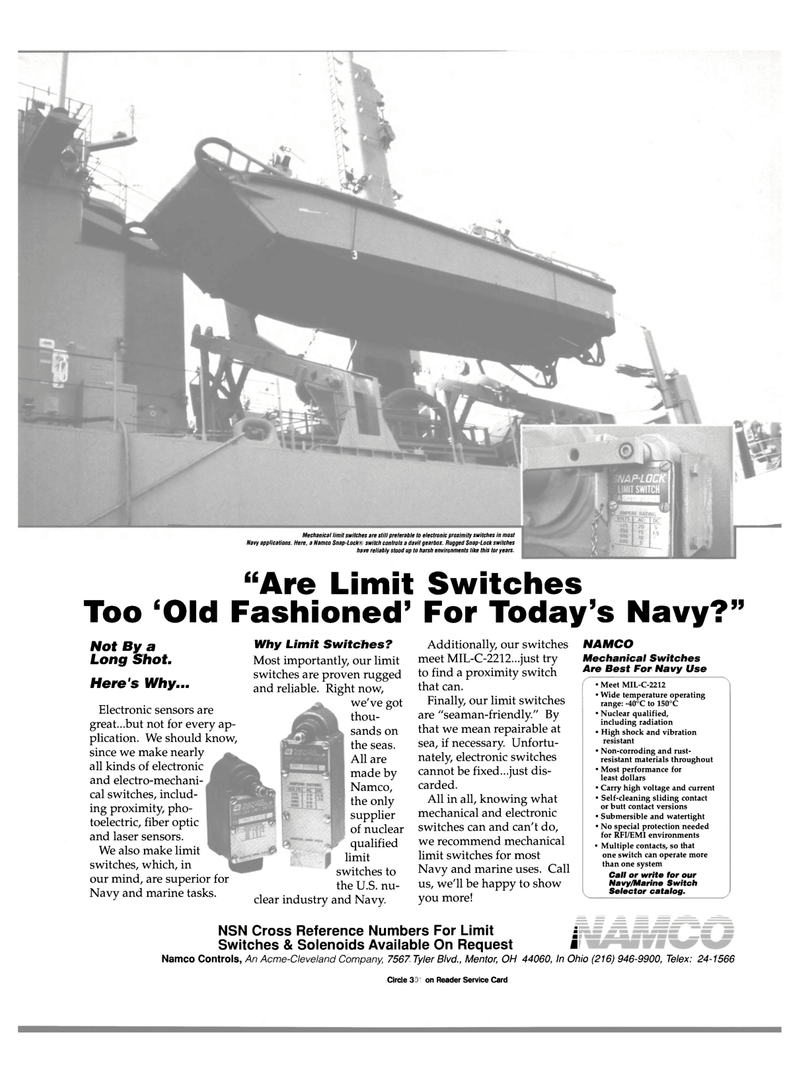
Page 43: of Maritime Reporter Magazine (February 1989)
Read this page in Pdf, Flash or Html5 edition of February 1989 Maritime Reporter Magazine
Mechanical limit switches are still preferable to electronic proximity switches in most
Navy applications. Here, a Namco Snap-Lock® switch controls a davit gearbox. Rugged Snap-Lock switches have reliably stood up to harsh environments like this tor years. "Are Limit Switches
Too 'Old Fashioned' For Today's Navy?"
Additionally, our switches meet MIL-C-2212...just try to find a proximity switch that can.
Finally, our limit switches are "seaman-friendly." By that we mean repairable at sea, if necessary. Unfortu- nately, electronic switches cannot be fixed...just dis- carded.
All in all, knowing what mechanical and electronic switches can and can't do, we recommend mechanical limit switches for most
Navy and marine uses. Call us, we'll be happy to show you more!
NAMCO
Mechanical Switches
Are Best For Navy Use • Meet MIL-C-2212 • Wide temperature operating range: -40°C to 150°C • Nuclear qualified, including radiation • High shock and vibration resistant • Non-corroding and rust- resistant materials throughout • Most performance for least dollars • Carry high voltage and current • Self-cleaning sliding contact or butt contact versions • Submersible and watertight • No special protection needed for RFI/EMI environments • Multiple contacts, so that one switch can operate more than one system
Call or write for our
Navy/Marine Switch
Selector catalog.
NSN Cross Reference Numbers For Limit j
Switches & Solenoids Available On Request l
Namco Controls, An Acme-Cleveland Company, 7567 Tyler Blvd., Mentor, OH 44060, In Ohio (216) 946-9900, Telex: 24-1566
Why Limit Switches?
Most importantly, our limit switches are proven rugged and reliable. Right now, we've got thou- sands on the seas.
All are made by
Namco, the only supplier of nuclear qualified limit switches to the U.S. nu- clear industry and Navy.
Not By a
Long Shot.
Here's Why...
Electronic sensors are great...but not for every ap- plication. We should know, since we make nearly all kinds of electronic and electro-mechani- cal switches, includ- ing proximity, pho- toelectric, fiber optic and laser sensors.
We also make limit switches, which, in our mind, are superior for
Navy and marine tasks.
Circle 193 on Reader Service Card •*•

 42
42

 44
44
